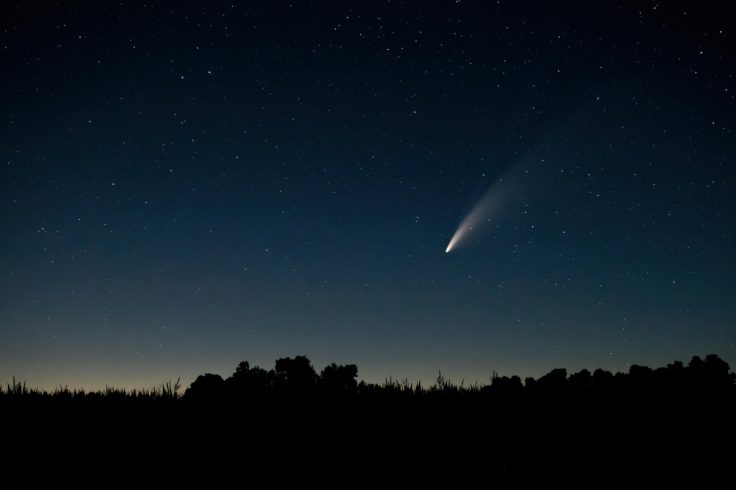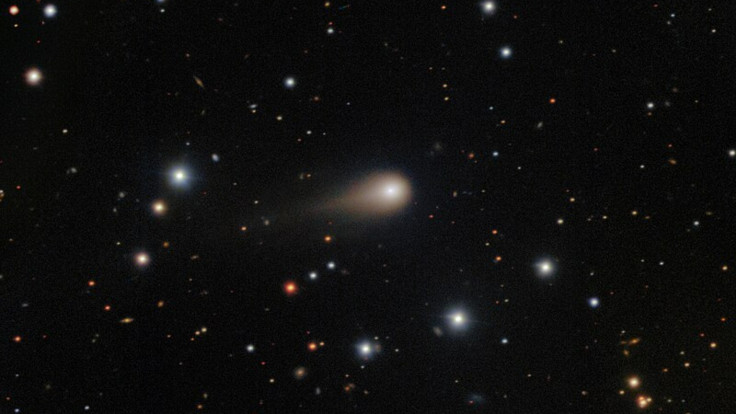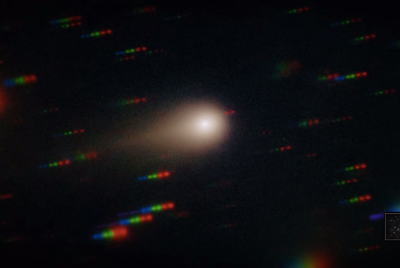3I/ATLAS: 'Wrong Way' Tail Pointing at Sun Has Scientists 'Stumped'
The rare interstellar comet 3I/ATLAS, only the third ever seen, is baffling scientists with a bizarre 'anti-tail' that points towards the Sun.

The cosmos rarely sends a messenger right to our doorstep. Even rarer is a messenger that defies explanation. The interstellar comet 3I/ATLAS, first discovered on July 1, 2025, by the ATLAS survey telescope in Chile, has arrived, an object originating from a star system light-years away, and it is currently rewriting the celestial rulebook.
This mysterious visitor is only the third confirmed interstellar comet humans have ever observed, following the infamous 'Oumuamua and 2I/Borisov. Like its predecessors, 3I/Atlas is captivating researchers globally, not just for its alien origin, but for a bizarre and unique new feature: an unexpected 'anti-tail'.
This singular phenomenon has intensified the comet's appeal, turning it from a rare object into a central astronomical puzzle. Its strange movements, unpredictable changes in brightness, and this backwards-pointing tail collectively ensure that scientists are racing against time to study it before it fades back into the endless night.

The Celestial Rule-Breaker: Why 3I/ATLAS Is So Rare
Interstellar comets are not ordinary. They are fragments formed in a different stellar nursery entirely, meaning they carry vital 'genetic' information—data on the materials and processes—about star systems light-years away that we could never hope to obtain from objects formed within our own solar system.
This is what makes objects like 3I/ATLAS so valuable; they are, effectively, free samples of the wider galaxy delivered directly to us.
Objects that originate outside our solar system are extremely rare visitors, and when they do arrive, they stay for only a short time before returning to the gulf of deep space. Currently travelling on a hyperbolic trajectory, this brevity makes every new detail about the comet critically important for scientists.
Researchers are working in collaboration across continents, with telescopes in several countries collecting images and data. The goal is to compare notes, identify patterns, and ultimately learn as much as possible before the comet moves away and becomes too distant to observe.

An Anti-Tail Unveiled: The Bizarre Mystery of 3I/ATLAS
The anti-tail itself is a counter-intuitive feature. A standard comet's tail forms when solar radiation heats the comet, pushing dust and gas away from the Sun. This tail always trails behind, pointing in the opposite direction from our star. The anti-tail, conversely, points in the opposite direction again, appearing to face towards the Sun.
While anti-tails are not unheard of, they are usually an optical illusion: the comet's dust spreads into a vast, thin sheet, and when Earth passes through a particular viewing angle relative to this sheet, it can appear to have a tail pointing in the 'wrong' direction. In the case of 3I/Atlas, however, scientists are puzzled because the structure appears far too strong and defined to be dismissed by the usual explanation.
This comet's origins outside our solar system suggest its fundamental dust composition and internal structure might be vastly different from the objects we normally observe. Hubble Space Telescope observations estimate the comet's icy nucleus is no larger than 5.6 kilometres across, yet its coma extends thousands of kilometres.
This unique, possibly alien, composition could be the underlying reason for the anti-tail's unexpected appearance. Researchers have presented several competing theories, though none have been confirmed yet. Some posit that the phenomenon is caused by entirely unusual dust particles that react differently to solar radiation pressure.
Preliminary spectroscopic readings indicate a high concentration of carbon dioxide (CO₂) and dust in its emissions, an unusual finding compared to water-rich solar system comets. Others suggest that the comet's spin or its specific path through the solar system could be the dominant factor. Ultimately, more observations are critically needed to properly analyse and understand the true cause of this baffling formation.

Extraterrestrial Clues: What Scientists Hope to Discover from 3I/ATLAS
For now, the anti-tail of 3I/ATLAS remains an astronomical enigma—but a deeply significant one. The comet reached its closest point to the Sun (perihelion) in late October 2025, and is expected to pass within about 270 million kilometres of Earth in mid-December 2025, posing no threat to the planet. This discovery reinforces why studying interstellar visitors is so critical.
Every unusual feature, whether it is the strange brightening or the backwards-facing tail, provides a unique opportunity to learn something new about how space objects are formed and how they behave outside our solar system.
Scientists have emphasised that they still need more data to fully understand the anti-tail. The comet's position, speed, the exact materials it is composed of, and the precise angle of sunlight may all play a part in the emerging scientific explanation.
As more data and high-resolution images are collected, experts are working to piece together a clearer picture. It is a race against the cosmos itself, spurred on by the knowledge that this rare object is a crucial key to looking deeper into the unknown, unmapped parts of our universe.
The interstellar visitor 3I/ATLAS is a cosmic puzzle box, offering astronomers a fleeting glimpse into the material composition and physical processes of star systems far beyond our own.
As researchers worldwide continue their critical race against time to collect data before the comet recedes into deep space, its mysterious, 'wrong way' anti-tail reminds us that the universe still holds vast, unexplained secrets.
© Copyright IBTimes 2025. All rights reserved.




















